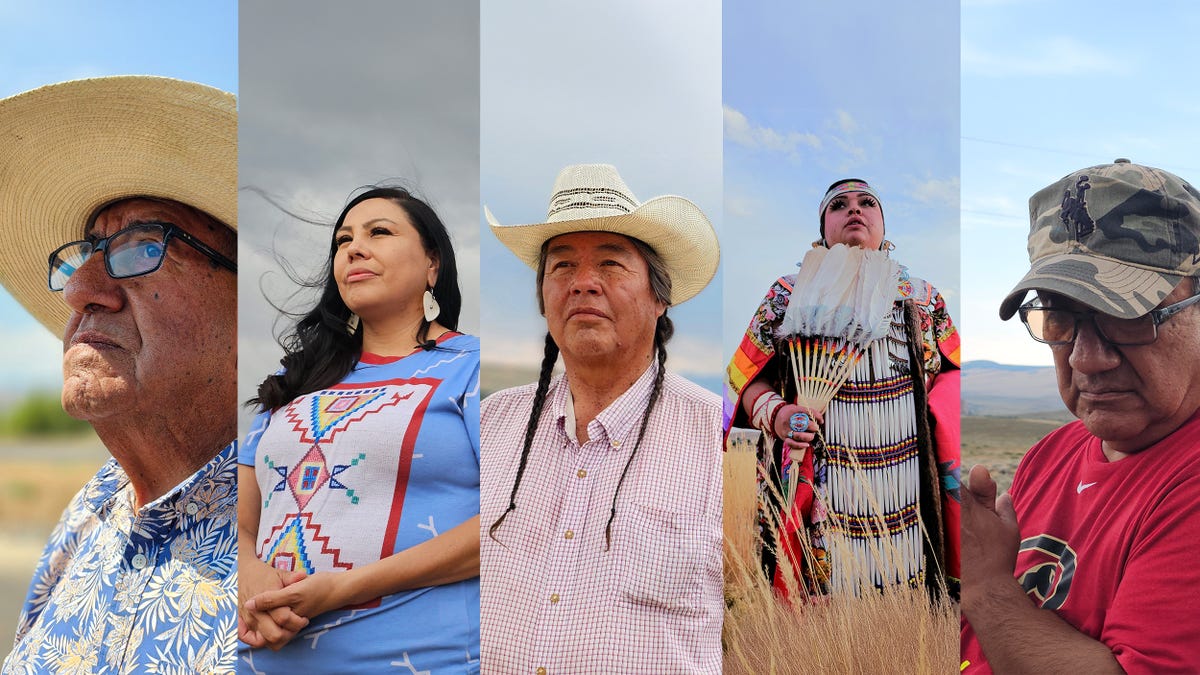California
The crisis of missing and murdered Indigenous people in California and the push for change

SACRAMENTO — California is home to the largest Native American population in the country with more than 160 tribes. The state ranks 5th for the country’s most cases of missing and murdered Indigenous people. It’s been described as an epidemic, an emergency and a crisis by California tribal leaders desperate for change.
California’s Superior Court reports further that Native Americans make up the highest rate of missing and murdered people.
“Whether it’s our mothers, daughter, sisters, we need them back,” said Dustin Murray, tribal administrator for the Shingle Springs Band of Miwok Indians. “Without the spotlight this issue is receiving, a lot of people might just go about their day not knowing this is an issue. Our women and children and people face disproportionately wide amounts of violence of any kind. The unfortunate end is them missing or murdered. The amount of survivors from abuse, stalking, it’s higher than any other demographic here.”
Murray and tribe Chairwoman Regina Cuellar were both fierce advocates for California’s first legislative step to address the crisis of missing and murdered Indigenous people: the state’s Feather Alert System that was signed into law in 2022 and enacted in January 2023.
Murray calls the alert a success one year later.
“It means that our voices were heard first and foremost and that the state is backing a solution to this problem,” said Murray. “Ever since spring of last year, people know it’s a problem and they are not OK with it. The amount of support we have seen pour in from outside the tribal community has been wonderful.”
California became one of just a few states to enact a Feather Alert, comparable to an Amber Alert, that allows the state police to send out notifications for people missing from tribal land. It’s a hand-in-hand response between tribal leaders and state leaders to collaborate to find the missing.
Qualifications for the alert include people who have disappeared under suspicious circumstances and could be in danger.
Assemblymember James Ramos is the state’s first and only Native American assemblymember. He authored the bill to expose a crisis long kept in the dark.
“It’s disheartening,” Ramos told reporters at a Feather Alert roundtable discussion. “And it had to take a California Indian person to get elected in the state legislature for that state of California to start to shed light on this that’s been going on since I was growing up on the San Manuel Indian reservation.”
The Sovereign Bodies Institute started tracking the number of missing Indigenous people in California in 2015, saying the average of known cases is about 14 a year.
That means they can assume an estimation of at least 1,700 cases since the year 1900 based on that average. They say the number of cases is expected to be exponentially higher largely due to misreporting and misclassification of Native Americans in official reports.
“I think what’s more scary is the inaccuracies that we know exist in collecting this type of data. Those are the reported cases. What about the unreported cases?” asked Murray.
Statistics from the Sovereign Bodies Institute also reveal that 84% of Indigenous women living on reservations fall victim to some type of violence. They are 10 times more likely to be murdered and they make up 40% of victims exploited in sex trafficking.
Many of these cases also have further elements of substance abuse, domestic violence and mental illness.
The work is only just beginning with the Feather Alert system.
Advocates tell CBS13 they’re focusing on more state and federal change including creating a national database for missing Indigenous people.
On a more local level, Murray says advocating for funding so tribes can have their own courts and police departments is critical. It’s a rare resource afforded to only a few local tribes; Shingle Springs Rancheria is one of them.
Murray says they are on a mission to uplift all tribes and all the missing so their communities can find peace and heal from the past.
“It really does touch every family and every community. I don’t think there’s a single tribal person in this state that it doesn’t affect,” said Murray.
No data was provided following CBS13’s requests to the California Highway Patrol about how many Feather Alerts have been sent out this year or how many are active. Part of the law includes that the CHP has to submit a report to the legislature about the system’s effectiveness within the next three years.

California
Federal homelessness data says California homeless population grew to 187,084 – Washington Examiner

(The Center Square) – Newly released federal data says California’s homeless population grew to 187,084 at the start of 2024, up from 181,399 in 2023, raising questions about the efficacy of the state’s tens of billions of dollars in recent homeless spending.
Most of the state’s increase in homelessness can be attributed to growth in the state’s unsheltered homeless population, which is nearly half of the nation’s total. However, the state’s homeless population did grow much less than the national average, suggesting some of the state’s programs — albeit costly — may finally be making an impact.
In September, California Gov. Gavin Newsom’s office brushed off a CalMatters estimate that the state’s homeless population grew to nearly 186,000, telling The Center Square the organization’s reporting was based on incomplete data that analyzed only 32 of the state’s 58 counties.
“California and other officials use official confirmed data published by the U.S. Department of Housing and Urban Development, and not CalMatters’ estimates, which are unverified,” said a Newsom spokesperson to The Center Square in September, when CalMatters released its report.
Now, the verified count from the U.S. Department of Housing and Urban Development recommended by Newsom’s office shows that homelessness is even higher than CalMatters estimated. This 5,685 individual increase in the state’s homeless population could suggest the state’s homelessness efforts — and tens of billions of dollars in recent state funding — have been unable to stop the growth of the state’s homeless population.
Earlier this year a state auditor looked into $24 billion of state homelessness spending, finding “the State lacks current information on the ongoing costs and outcomes of its homelessness programs” because it has “not consistently tracked and evaluated the State’s efforts to prevent and end homelessness.”
Newsom vetoed two widely-supported bipartisan bills to better track and evaluate homelessness spending and outcomes, saying his own directives to increase accountability make the measures redundant.
The state is now home to 123,974 unsheltered homeless individuals — up from 117,424 the year prior — or nearly half of the nation’s total. In 2019 — before the COVID-19 era — California had 151,278 homeless individuals, 108,432 of whom were unsheltered.
California
Your favorite movies starring California

Good morning, and welcome to the Essential California newsletter. Here’s what you need to know to start your weekend:
The best movies that capture the essence of California
The Essential California team this year expanded opportunities for readers to directly engage with the newsletter. Each week we ask readers to answer a question — from the best local restaurants to favorite books.
One question in particular got a lot of attention and sparked some debate: What is your favorite movie that captures the essence of California?
Below are the most mentioned movies and comments from readers about what makes these films special to California. We hope this list will help find something to watch this weekend. Enjoy!
“Chinatown”
Adelaide writes: “It doesn’t get more iconic than a film noir that tackles tremendous geopolitical issues that still affect us to this day.”
And Jim writes: “How can you talk about movies that capture the essence of California and not mention one of the greatest movies of all time, ‘Chinatown’? Today, despite the state’s beauty and glorious climate (most of the time), it is still as corrupt and morally bankrupt as it was back in the days of stealing water from the Owens Valley.”
Paul Giamatti, left, and Thomas Haden Church in the 2004 movie “Sideways,” directed by Alexander Payne.
(Searchlight Pictures)
“Sideways”
Raymond Ballesteros writes: “One of my all time favorite movies to see that truly captures the essence of California, hands down, is ‘Sideways.’
“Alexander Payne seizes the beauty and majesty of California’s Santa Barbara wine country, including a handful of wineries that encapsulates the hearts of fellow wine lovers across California and the country. Of course, not to be watched with a glass of Merlot!”

Keanu Reeves, left, and Patrick Swayze in the 1991 film “Point Break.”
(20th Century Fox)
“Point Break”
Fritzi Lareau write: “I am a tour guide and when touring the Golden State I show my guests ‘Point Break’ (the original with Keanu Reeves and Patrick Swayze) or ‘Hollywood Homicide’ starring Harrison Ford.”

Edward James Olmos stars as Garfield High School math teacher Jaime Escalante in 1988’s “Stand and Deliver.”
(Warner Bros. Pictures)
“Stand and Deliver”
Robert Reul writes: “One great film that is 100% California is ‘Stand and Deliver,’ with Edward James Olmos and an amazing cast of young actors. I have found few, if any, films that capture the absolute magic that can happen in the community of first-generation Americans, descended from hard-working Mexican immigrants.”

Jeff Bridges as the title character in the Coen Brothers’ “The Big Lebowski.”
(Merrick Morton / Gramercy Pictures)
Honorable mentions
“Top Gun”
“The Birds”
“The Parent Trap”
“The Big Lebowski”
“Fast Times at Ridgemont High”
“La La Land”
Want to wade into the debate over which movie captures the essence of California? Feel free to email us at essentialcalifornia@latimes.com.
The week’s biggest stories

President-elect Donald Trump, shown at his Mar-a-Lago estate in 2023, is stocking his cabinet with Floridians.
(Evan Vucci / Associated Press)
Florida is winning the political battle with California as Trump takes office
- Trump is stocking his cabinet with Floridians. And his plans to reverse California’s policies on the environment, crime, homelessness and education are facing far less pushback than they did during his first term.
- Gov. Gavin Newsom has vowed to continue the fight against Trump’s policies but without what he called “a resistance brand” that defined his earlier clashes.
- Meanwhile, healthcare is Newsom’s biggest unfinished project. Trump complicates the governor’s task.
Destructive waves keep thrashing Santa Cruz, causing millions of dollars in damage in recent years
Scientists say we are fighting H5N1 bird flu with one hand tied behind our backs
- Scientists and health officials fear we’re on the precipice of another global pandemic as the H5N1 bird flu virus steamrolls its way across the globe. But when that could come to pass is hard to predict.
- Just one mutation can make the bird flu a threat to humans, California researchers found.
- L.A. County health officials are warning pet owners to avoid raw cat food after a feline died of bird flu.
California is growing again
- The Golden State’s population grew by almost a quarter of a million residents in 2024, according to the U.S. Census Bureau, a rebound that brings California almost back to its pre-pandemic numbers.
- While California’s population gain of 232,570 people from July 1, 2023, to July 1, 2024, represents the largest numeric population increase in the nation’s West, it lagged behind Texas, which expanded its population by 562,941, and Florida, which grew by 467,347 people.
More big stories
Get unlimited access to the Los Angeles Times. Subscribe here.
This week’s must reads

(Emiliano Ponzi / For The Times)
A California inmate recruited “wives” to spread fentanyl across Alaska, federal authorities say.
The prisoner, Heraclio Sanchez Rodriguez, oversaw a sprawling drug ring that spread death and addiction to the most remote corners of Alaska, prosecutors say.
More great reads
How can we make this newsletter more useful? Send comments to essentialcalifornia@latimes.com.
For your weekend

Refresh yourself on “Squid Game” before starting Season 2 on Netflix.
(No Ju-han / Netflix)
Going out
Staying in
How well did you follow the news this week? Take our quiz.

(Times staff and wire photos)
Which creature gets top billing in the title of the Barry Jenkins–directed “Lion King” prequel that hit theaters last week? Plus nine other questions from our weekly news quiz.
Have a great weekend, from the Essential California team
Hunter Clauss, multiplatform editor
Check our top stories, topics and the latest articles on latimes.com.
California
Winning $1.22 billion Mega Millions ticket sold in Northern California

Winning $1.22B Mega Millions ticket sold in California
One Californian has plenty of dough to ring in the New Year after drawing the winning number. After three months without anyone winning the top prize, a ticket worth an estimated $1.22 billion was sold for the drawing Friday night.
One Californian has plenty of dough to ring in the New Year after drawing the winning number. After three months without anyone winning the top prize, a ticket worth an estimated $1.22 billion was sold for the drawing Friday night.
According to the California State Lottery, the jackpot ticket was sold in Cottonwood, within Shasta County limits. Two other 5 out of 5 winning tickets were sold in California; one in Roseville and another in San Bernardino.
The winner matched the white balls 3, 7, 37, 49, 55 and the gold Mega Ball 6. The identity of the winner was not immediately known.
The total amount of the Mega Millions jackpot would only be distributed to a winner who chooses an annuity paid over 29 years. Nearly all grand prize winners opt to take a cash payout, which for Friday night’s drawing is an estimated $549.7 million.
Despite the game’s long odds of 1 in 302.6 million, players continued to purchase tickets as the size of the grand prize grew. Until Friday, the last time a Mega Millions player hit the top prize was Sept. 10.
The largest-ever Mega Millions jackpot ticket worth $1.6 billion was sold in Florida in August 2023. Two prizes for its compatriot Powerball lottery have been larger.
Mega Millions and Powerball are sold in 45 states, as well as Washington, D.C., and the U.S. Virgin Islands. Powerball also is sold in Puerto Rico.
KTVU contributed to this report.
-
/cdn.vox-cdn.com/uploads/chorus_asset/file/24924653/236780_Google_AntiTrust_Trial_Custom_Art_CVirginia__0003_1.png)
/cdn.vox-cdn.com/uploads/chorus_asset/file/24924653/236780_Google_AntiTrust_Trial_Custom_Art_CVirginia__0003_1.png) Technology1 week ago
Technology1 week agoGoogle’s counteroffer to the government trying to break it up is unbundling Android apps
-

 News1 week ago
News1 week agoNovo Nordisk shares tumble as weight-loss drug trial data disappoints
-

 Politics1 week ago
Politics1 week agoIllegal immigrant sexually abused child in the U.S. after being removed from the country five times
-

 Entertainment1 week ago
Entertainment1 week ago'It's a little holiday gift': Inside the Weeknd's free Santa Monica show for his biggest fans
-

 Lifestyle1 week ago
Lifestyle1 week agoThink you can't dance? Get up and try these tips in our comic. We dare you!
-
/cdn.vox-cdn.com/uploads/chorus_asset/file/25672934/Metaphor_Key_Art_Horizontal.png)
/cdn.vox-cdn.com/uploads/chorus_asset/file/25672934/Metaphor_Key_Art_Horizontal.png) Technology4 days ago
Technology4 days agoThere’s a reason Metaphor: ReFantanzio’s battle music sounds as cool as it does
-

 News5 days ago
News5 days agoFrance’s new premier selects Eric Lombard as finance minister
-

 Business4 days ago
Business4 days agoOn a quest for global domination, Chinese EV makers are upending Thailand's auto industry


















